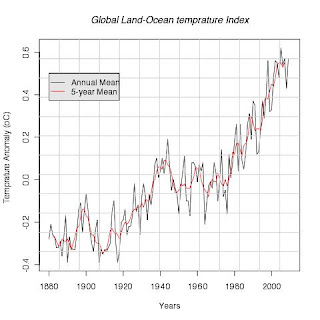“The financial crisis of 2007-09 is widely viewed as the worst financial disruption since the Great Depression. However, the accompanying economic recession was mild compared with the Great Depression, though severe by postwar standards,” (Wheelock, 2010). The Great Depression occurred in August 1929 through June 1933, a period of 110 months.
The National Bureau of Economic Research defines economic recession as a significant decline in the economic activity spread across the economy, lasting more than a few months (http://recession.org). Compared to the previous recessions it is evident that the current recession has one of the longest duration as shown in figure 1 below. A brief history of US economic recession can be found at http://recession.org.
Figure 1. The US economic recession periods after the Great Depression of 1929-33.
The current economic recession has negatively affected many parts of industry. Here we will look at agriculture and manufacturing. As it is always the case in economics; high demands – higher the price and vice-versa. The cost of vegetable went high and this lead to low production from the farms. The low production in turn resulted in the food prices slightly going up. The increased food /vegetable prices resulted in a decline in the consumption per capita. This is indicated in the below graph, fig. 2. It can be observed that during the non-economic recession years the consumption were higher and they usually decline sharply when the recession occurs.
Figure 2. The US per capita use of vegetables since 1970
The manufacturing industry has been severely affected by the recession. The figure 3 below shows the economic recession periods and the average hours spent in manufacturing since 1939. It can be noted that the weekly hours of manufacturing respond to the recession by dropping sharply. This could be due to the fact that companies try to reduce costs by reducing the hours of operations. In this way the utility bills and over time claims are reduced.
Figure 3. Average Hourly weekly, manufacturing
As a result of cutting down the hours of operation and reducing the workforce the production of goods gets affected in a negative way, i.e. it declines. From fig. 4 it is evident that the US manufacturing industry has not yet fully recovered from the recession.
Figure 4. Durable good manufacturing (US)
Although the recession period is not yet over there are some positive signs that things may improve. Fig 2 and fig 3 show some slight and promising rise in the vegetable consumption and hours in manufacturing respectively. This could be a sign that the economy is on its way to recovery.
The other figure (4) still shows no sign of improvement. This maybe due to the low demand of the durable goods, as the consumers are still recovering from the recession panic.
It is important to note that these figures are the average for the US; the situation could be very different in the 50 states. For example Vest (2009) reported, “Arizona’s economy is one of the most volatile in the nation. It grows much faster than the nation during expansions, but suffers equally with the nation during recessions”.
Reference:








